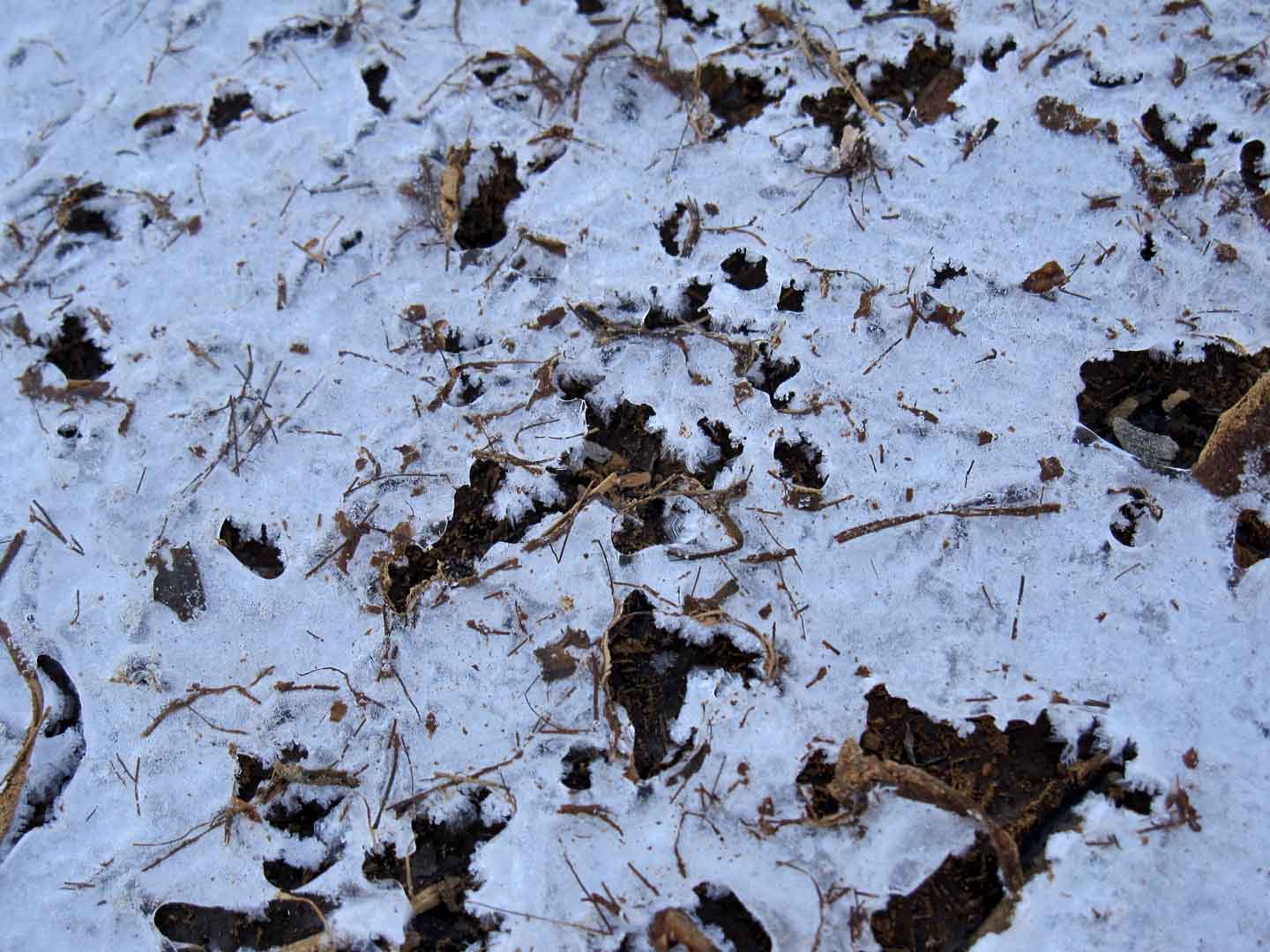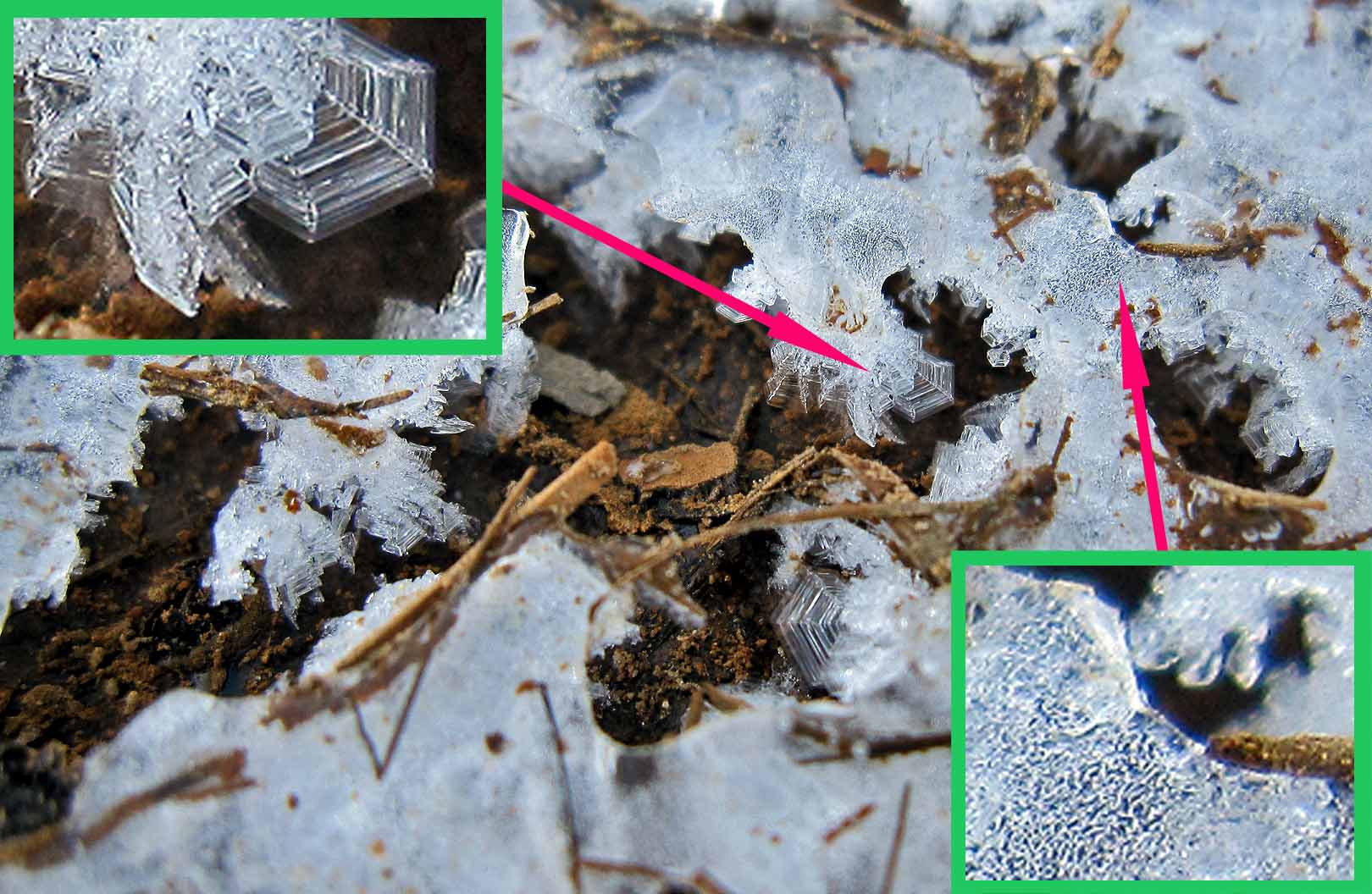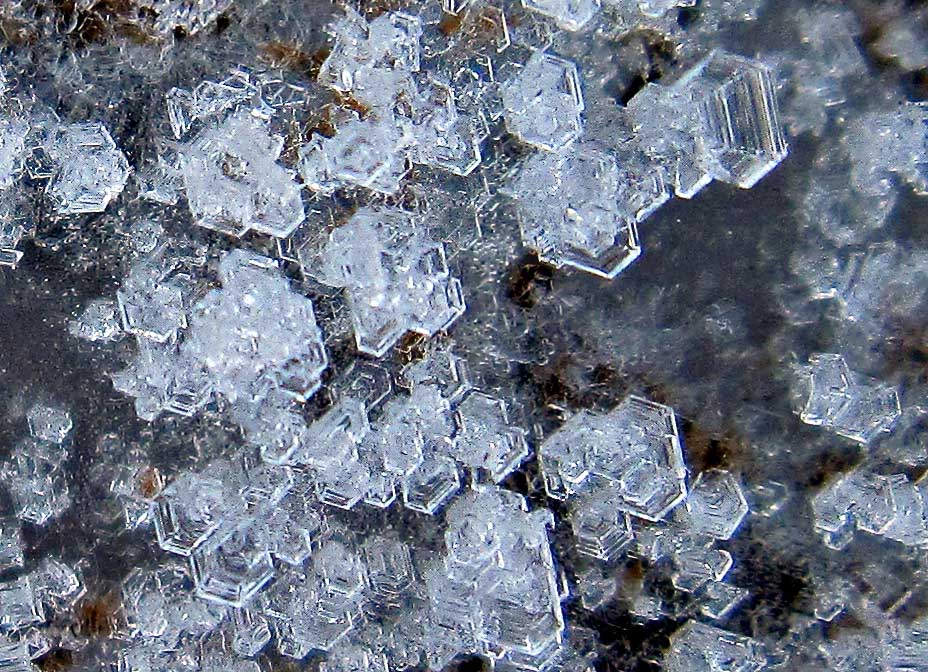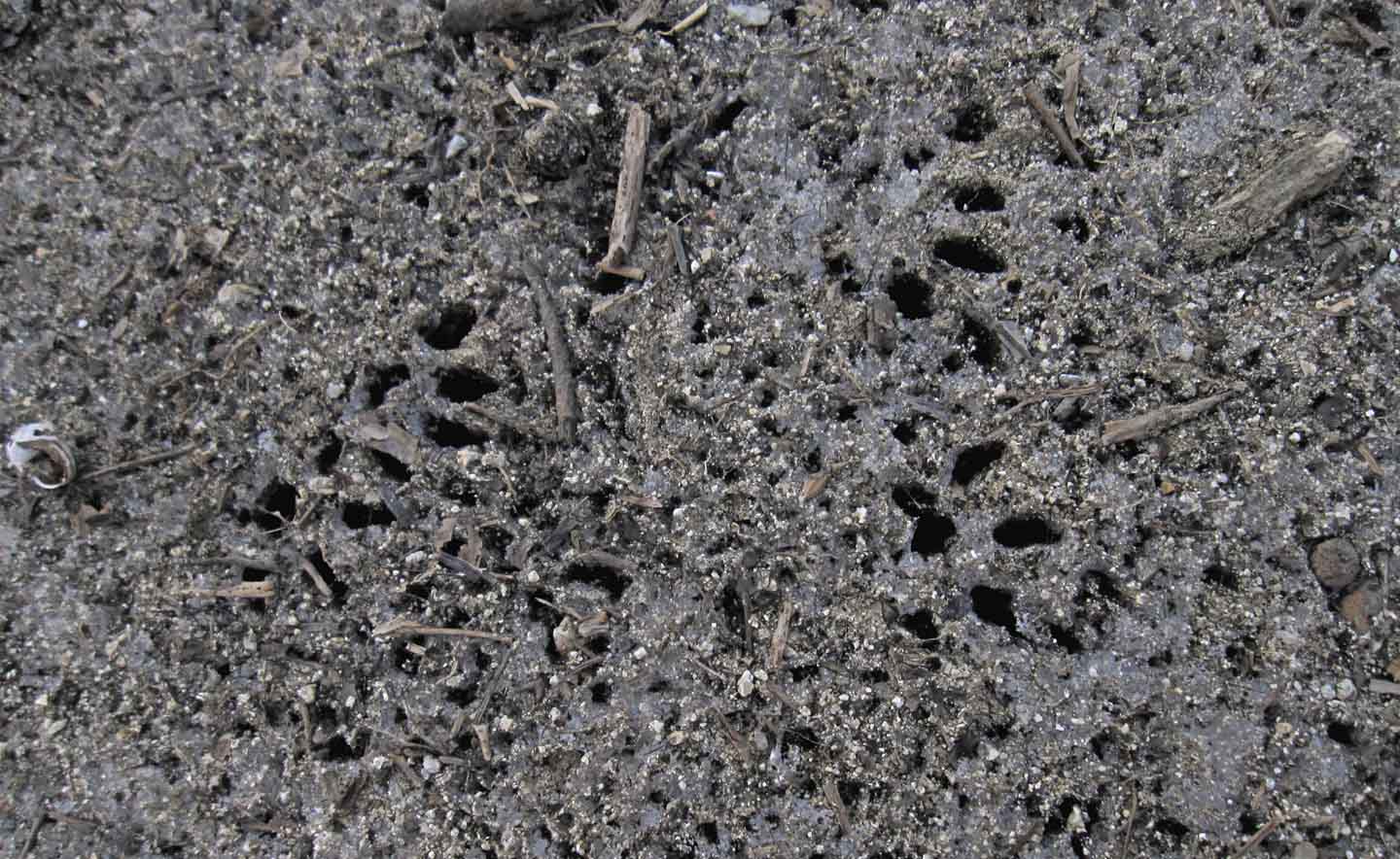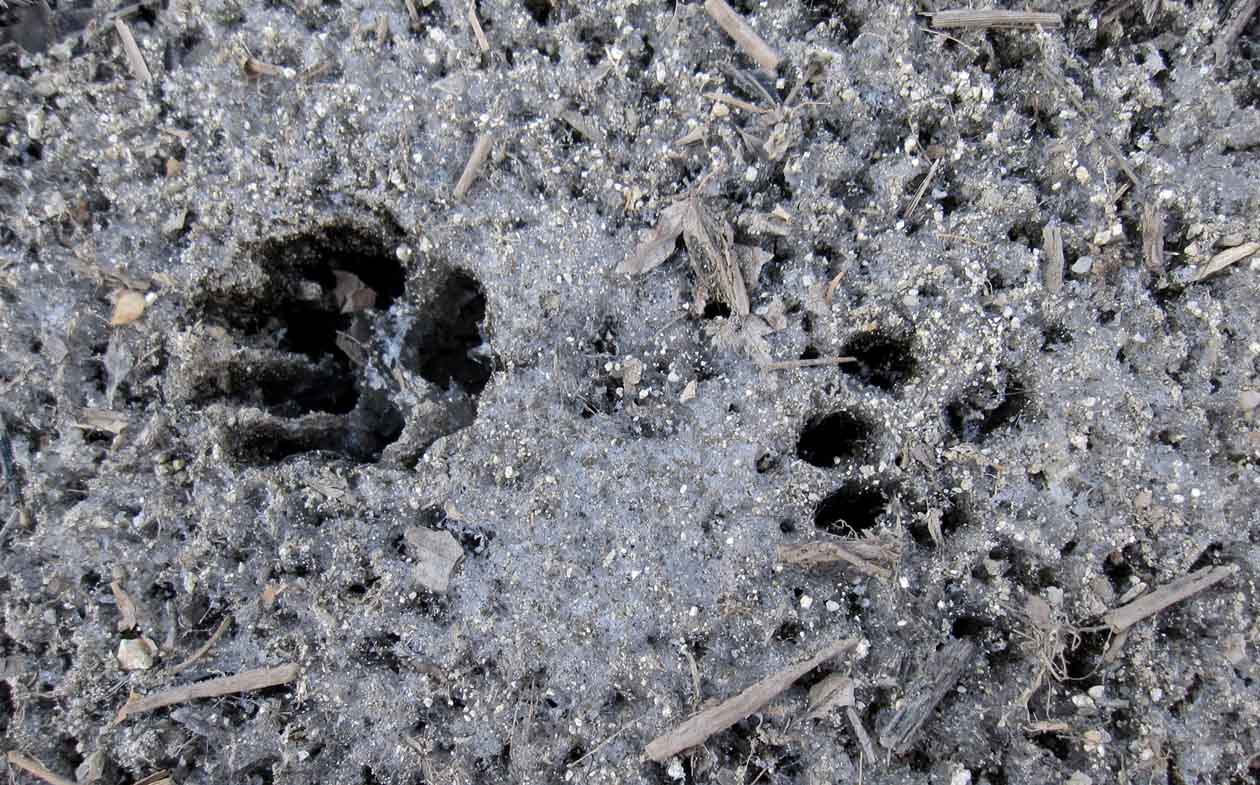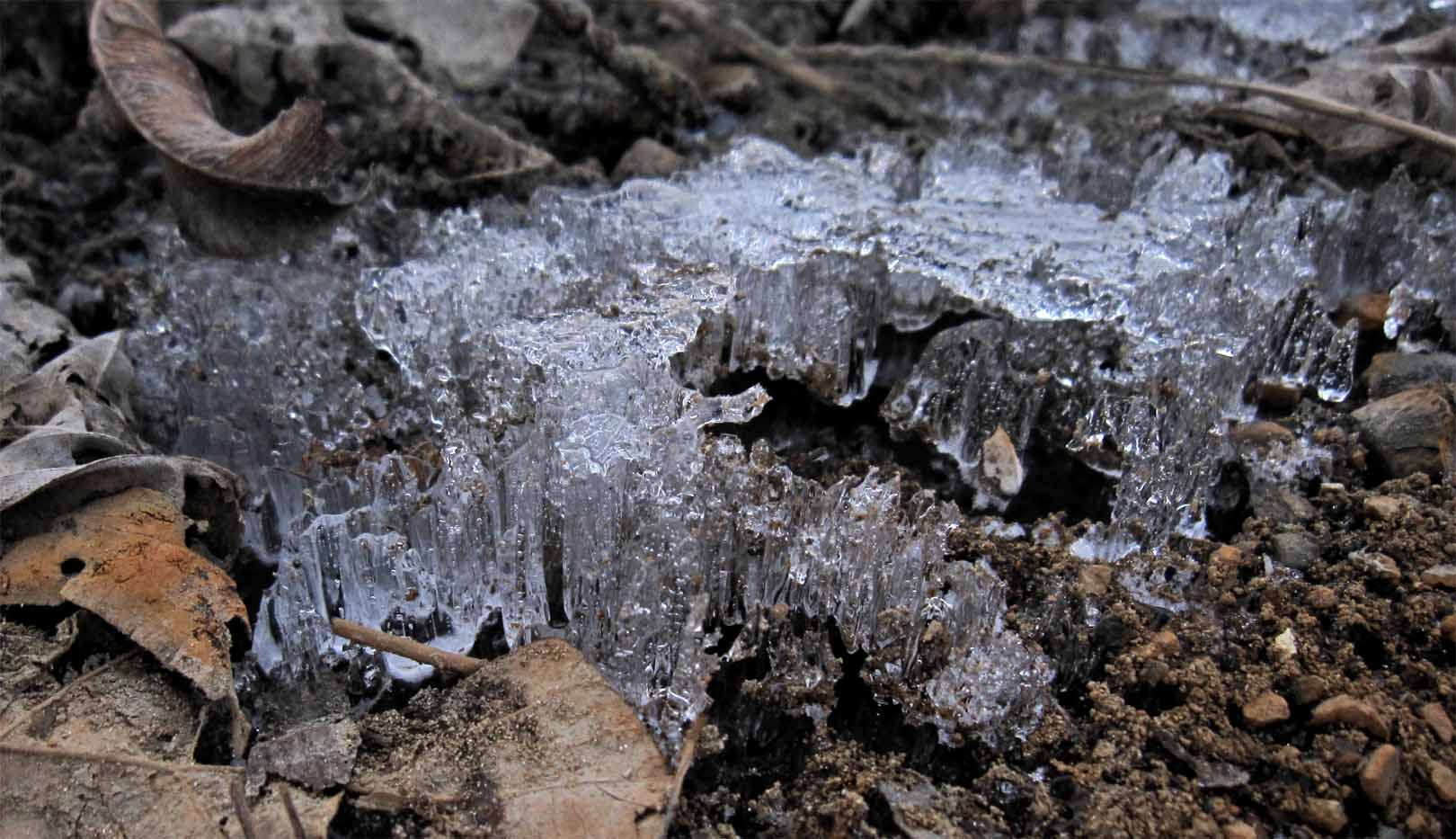| « The Maltese Cross in Pond Ice | Snakeskin Frost and Other Curiosities » |
Strange Pawprints in the Ice
On account of the recent cold spell, I went up the hill behind us in search of a glazed-over pond. Ponds can have interesting freezing patterns and, if the ice is thick enough, a little excitement. I've never seen these ponds freeze, but then again, I've never thought it likely enough to warrant a visit in winter. The first two ponds I visited (technically, man-made reservoirs for flooding the rice fields) had ice only over a small section at one end. I had better luck with with a drained pond. This 'pond' looked more like a dirty mud pit, but I saw evidence of ice on one side. So, ignoring the warning signs (more on that later), I walked down and around to the icy end. From eye-level, and even from a crouch, this ice looked like snow.
But except for the holes that exposed the dirt underneath and the twiggy matter on top, the surface was smooth and level, like that of a glazed pond or puddle. Indeed, a partially glazed-over pond is probably what it had been. The whiteness was due to some fuzzy growth underneath that I could see in the large gaps (see the image below).
Though I couldn't discern the type of growth by eye, my camera revealed it to be hoar frost. The image below shows that some of the hoar crystals were fairly large.
The bottom-right inset of the above image shows that one can see through the clear surface glaze to the white hoar underneath. When I broke off a small piece and flipped it over, I saw that some of the hoar consisted of aligned plates in the plane of the surface glaze.
Slightly uphill from the hoar, the white hoar glaze vanished, revealing only frozen soil. The soil was a little porous, with numerous small holes. Amongst the small holes were larger ones.
The larger holes looked like animal tracks, but it seemed odd for tracks to go so deep at only the toe and pad depressions, so I wasn't sure they were tracks. But nearby, I saw two unmistakable prints, pointing in the opposite direction.
How could such deep prints form? And why were there only two in this spot? I often see puzzling formations in frozen ground, particularly ground with some open water. On my earliest icespotting outings a few years ago, I would puzzle over glazed puddles that seemed to drain suddenly overnight yet still have water for new glaze on the following nights. I found the likely culprit in the library - in an article in Nature from the 70s. In the article, the author, who lived just a bit north of me, reported on how water would drain from puddles overnight, only to reappear during the day. He suggested that the water would flow underground, and uphill to the base of ice columns that pushed up from the soil. I noticed that my drained-overnight puddles would usually lie between such soil ice-columns, but during the day, the ice columns would melt and the puddles refill with water, despite a lack of rain. In my mud-pond, some soil-ice columns were not far from the snow-frost and pawprints.
So I think the author hit on an important, widespread process. It doesn't completely explain the snow-frost and oddly deep pawprints, but it might be a good start.
While I explored some other icy things on the mud-pond, I ventured out to the middle. Suddenly, the glaze over the mud gave way, leaving me knee-deep in grey clayish muck. I eased my way back on top of the glaze and gingerly went back to the edge, leaving my own two strange 'pawprints' in the middle. Thinking of the warning signs, I felt a little silly. But still, I'm glad I checked the place out.
- JN
1 comment
Now, nearly a year later, I am not sure what my explanation in the third-to-last paragraph was. I might have been thinking that the depth of the paw-print holes was due to water draining.
But I think the more likely explanation is more obvious: The pawprints were made before the ice formed, and then the ice formed and pushed up around the indentations, just like the columnar ground ice in the last photo.
Two questions about this explanation:
1) why would ice grow up everywhere except at the depressions? and
2) Why then does this ice not look columnar?
The answer to 1) is that ground ice grows from a certain level in the soil, at an isotherm surface (i.e., a constant temperature) that is typically a little below freezing. This level must have been at the uppermost surface of the ground (thus explaining why that ice is so white - it could not push up much dirt because there was very little dirt above the isotherm). But in the pawprint depressions, the temperature was above the freezing temperature, meaning that no ice could grow from those spots. Ah! it seems so obvious now…
About 2), I don’t know why the ground ice is sometimes columnar and sometimes more of a continuous mesh, but I see both types quite often. Perhaps the mesh type happens when the columns essentially grow together, being multiply connected to the point of resembling a web-like structure. Maybe this happens more with a smoother, more uniform and flat, dirt surface.
Jon
